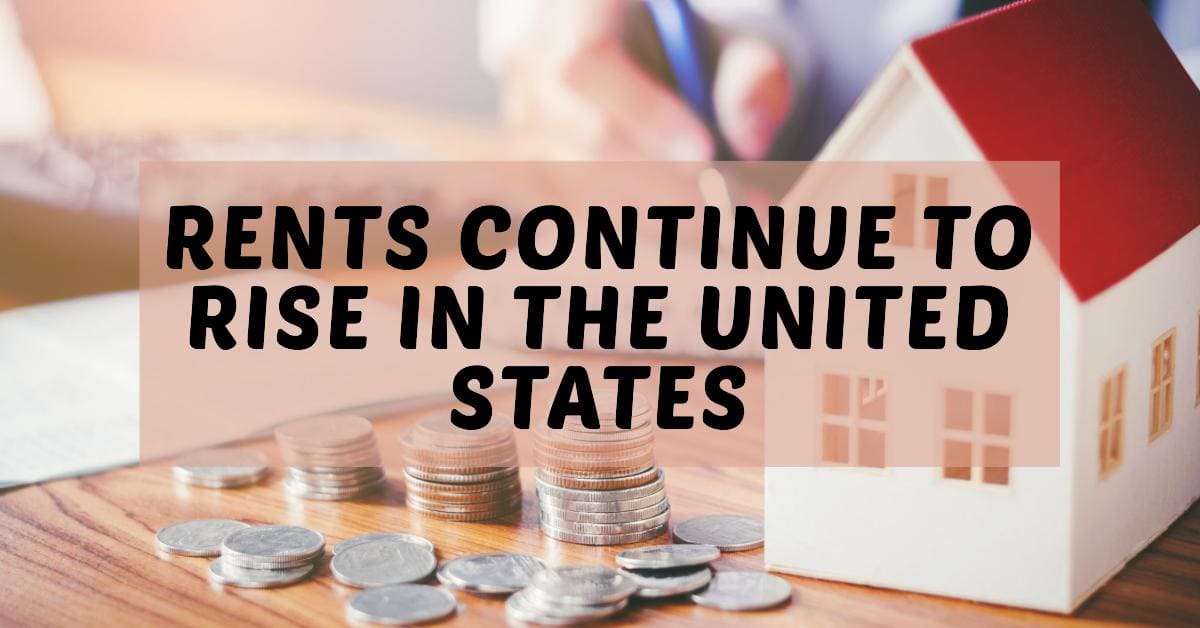The rental market trends reflect the dynamic nature of the economy and the housing sector. Rents have witnessed a mix of fluctuations, with some regions experiencing a rise in rental prices while others see a stabilization or even a decrease.
Nationally:
- Rent prices have risen steadily over the past few years, with a major spike in 2021. However, the growth rate has slowed down in 2023 and early 2024. As of February 2024, rents are around 2.25% higher than a year ago (Rent.com).
Compared to pre-pandemic:
- Rents are still significantly higher than they were before the pandemic. Nationally, they're about 29.9% more expensive (NerdWallet).
Variation by location:
- Rent prices vary greatly depending on the location. Some states, like Hawaii and California, have much higher rents than others, like West Virginia (Time).
On a national level, rent prices have seen an increase of 2.25 percent from February 2023 to February 2024, with the median price of an apartment reaching $1,981. This increment marks a notable change from the previous five months, where rent prices either fell or remained flat. The factors influencing this rise include the pressure from the housing market, significant annual gains in home prices, and a bump in inflation, which complicates the Federal Reserve's decisions regarding interest rates.
Zillow's rental market summary echoes this sentiment, indicating a median rent for all bedrooms and property types in the US at $2,080 as of April 2024. This figure represents a month-over-month change of +$50, although it's a year-over-year decrease of -$70. The data suggests a market that is adjusting after the unprecedented rental price spikes during the pandemic era, seeking a new equilibrium in the post-pandemic world.
Regionally, the Northeast and Midwest have been at the forefront of rental gains. The Northeast, in particular, has seen the largest regional increase of 5.3 percent year-over-year, with current rents at their highest since August of 2023. The Midwest also recorded a rise in rents, albeit offering the most affordable prices compared to other regions in the nation.
In contrast, the West has experienced a slight decline in median rents by one-tenth of a percent year-on-year, attributed to an oversupply of housing inventory in Southwest and Mountain West metros. This indicates a cooling period for a region that previously saw peak rental prices.
The rental market's temperature is gauged by renter demand compared to the national average. A hot market signifies increasing demand, which can lead to higher rents. As of now, the US rental market aligns with the national median, suggesting a balanced state between supply and demand.
Notable Rent Trends
According to Zumper, in March, the national rates for both one and two-bedrooms experienced growth on a monthly basis for the first time in 6 months. This rate increase aligns with the latest Consumer Price Index (CPI) data, indicating that inflation is persisting longer than expected. The recent uptick shown in Zumper’s National Rent Index suggests that even more pressure will be put on the CPI in the coming months.
- Arizona Markets: Heavily supplied markets in Arizona continue to see prices cool, with all cities in the state's report either having flat or declining annual rent rates.
- New York City: This city had the largest annual rent price growth rate in the nation, up 25%.
National Rent Rates
Both one-bedroom and two-bedroom national rates increased on a monthly basis for the first time in 6 months. The one-bedroom rent increased 0.3% to $1,487, while two-bedrooms grew 0.5% to $1,847. Annually, Zumper’s national rates have remained relatively flat with one-bedrooms down 0.5% and two-bedrooms up 0.8%.
Inflation and Rent Rates
After a stabilization over the last 6 months, the most recent CPI data revealed that rates increased again in February, suggesting that inflation is persisting. Shelter, along with energy, was the most significant contributor to the uptick. Zumper’s National Rent Index serves as a leading indicator of shelter CPI, suggesting more pressure on the CPI in the coming months.
Regional Variances
Arizona: Heavily supplied markets in Arizona continue to see prices cool, with all 6 cities in the report either having flat or declining rents.
New York City: Rent climbed 25% annually, leading the nation in rent price growth. Other Midwest and Northeast markets also experienced significant year-over-year growth rates.
Looking ahead, experts predict that the US rental market will continue to be influenced by factors such as changing demographics, lifestyle preferences, and shifts in urbanization. These elements will likely sustain demand, especially in urban centers and metropolitan areas, potentially leading to higher demand for rentals in these locations.
In summary, the US rental market in 2024 presents a complex picture, with various factors at play influencing rental prices. While some areas see growth, others are stabilizing, indicating a market that is continually adapting to the economic and social changes of our times. For renters and investors alike, staying informed and agile will be key to navigating the rental landscape of 2024.





